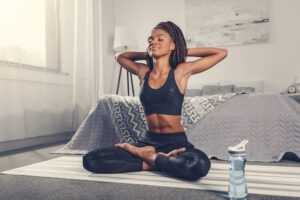Are you a fitness facility owner struggling to unlock the full potential of your gym? Gym owners often struggle to optimize member performance and profitability due to layout, lighting, branding, and architectural challenges.
Functional Training Gym Design is the key to success. By optimizing these elements, you can create a high-performing and profitable gym. Discover the key elements of Functional Training Gym Design as we explore crucial aspects, and share insights, examples, and expert tips.
So without further ado, let’s get started!
Table of Contents
1. Layout and Flow
The layout and flow of a functional training gym primarily determine how efficiently space is utilized, ensuring that gym members have enough room to perform their exercises comfortably and safely. This also affects the gym’s overall ambiance and workout effectiveness. Let’s take a look at it below:
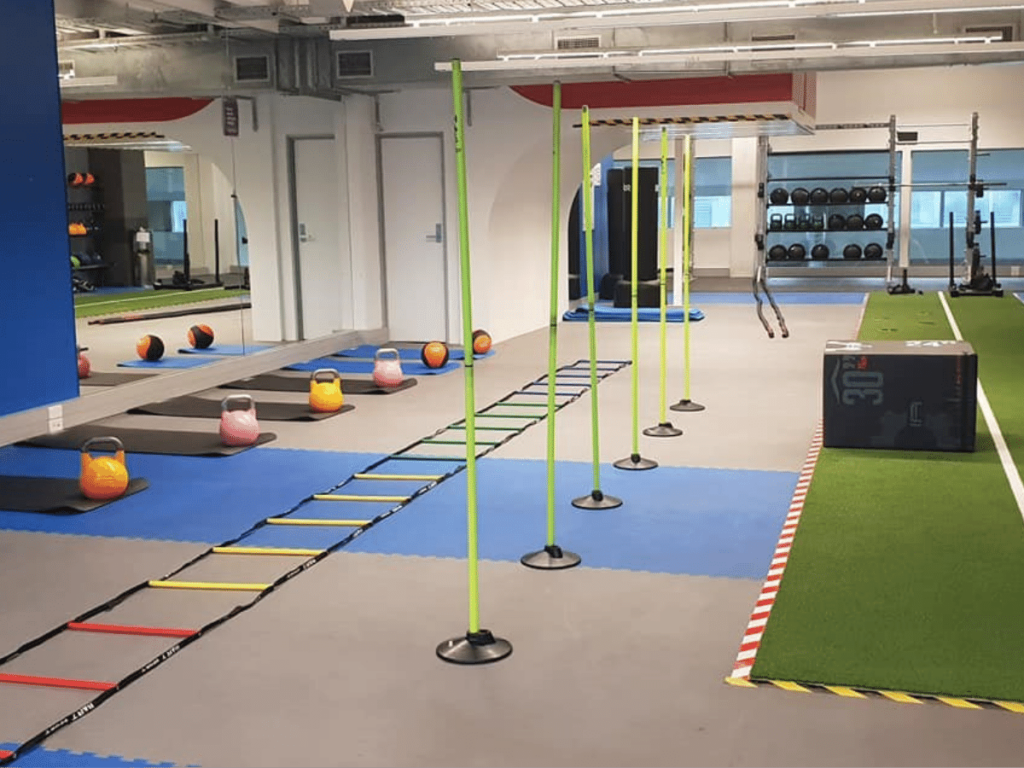
Zones
A functional training gym should be divided into various zones, each dedicated to different aspects of functional fitness. These zones could include the free weights area, the cardio area, the high-intensity interval training (HIIT) area, the strength training area, and the stretching and cool-down area. Each zone should be adequately spaced from each other to avoid overlapping activities and maintain a smooth flow.
Flow
The flow of a gym pertains to the path that members will naturally take as they move from one area of the gym to another. Ideally, this path should be intuitive, reducing confusion and unnecessary crisscrossing. Gym members will usually warm up first, so the cardio equipment should be close to the entrance.
And now, you’re thinking, “How does this flow concept actually benefit my gym and its members?” Well, let me explain. A good flow reduces congestion, enhances member experience, and improves gym performance by minimizing the idle time between exercises for a more efficient workout.
Safety
Ensuring safety is paramount in gym design. By creating ample space between machines, establishing clear walking paths, and considering optimal viewing angles for staff supervision, you can significantly enhance the safety of the gym environment. I’m sure you’re with me on this one—safety is of utmost importance in any gym design.
Accessibility
A key aspect of a gym layout is its accessibility. This relates to how easily gym members can reach and utilize various gym equipment and facilities. All gym elements, from weightlifting racks to cardio machines and water dispensers, should be easily accessible and quick to locate. Remember, gym members shouldn’t waste workout time looking for equipment. An accessible layout helps declutter, keeping the gym functional and organized.
Integration
The integration of different gym zones is also a crucial component of a gym’s layout and flow. This involves how the different zones interconnect and support one another to provide a comprehensive and seamless fitness experience. Place the stretching zone near cardio and HIIT areas for easy cool-downs, ensuring smooth transitions for a better fitness routine.
2. Equipment Selection and Placement
Equipment selection plays a pivotal role in attracting and retaining clients, as it directly impacts their overall experience and satisfaction. Choosing the right equipment from Yanre Fitness got you covered, we can ensure that your gym meets the unique needs and preferences of the target audience, whether they are beginners or seasoned fitness enthusiasts. Here are the factors that illustrate the importance of equipment selection:
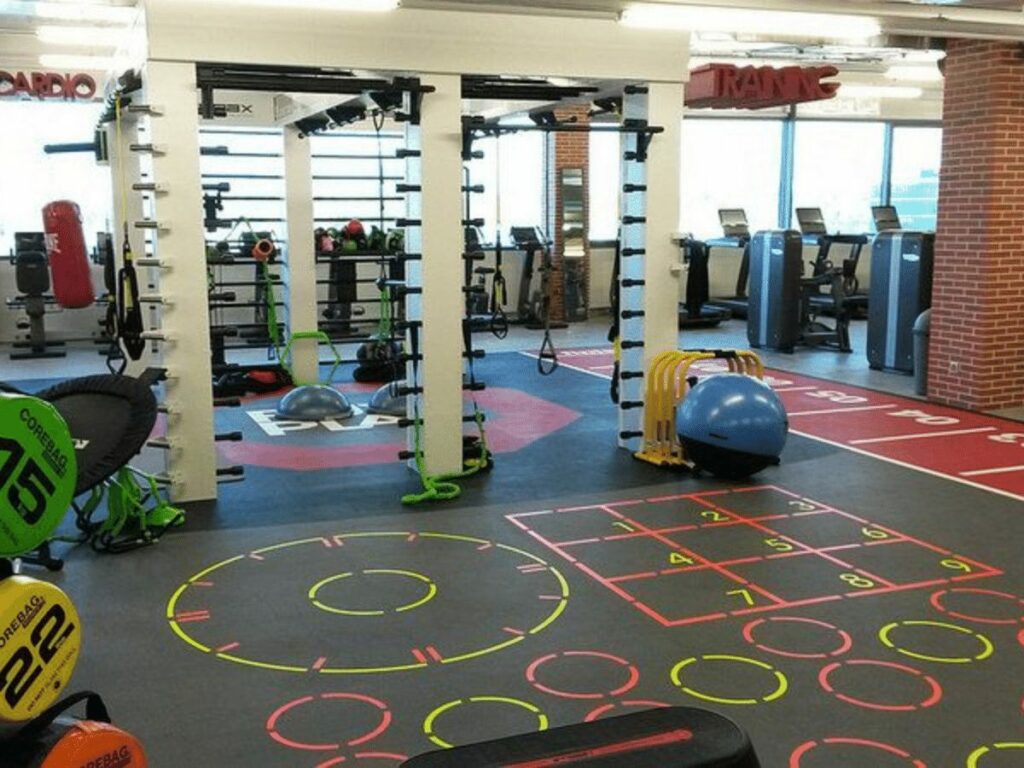
Gym Goals Alignment
Selecting equipment that aligns precisely with the gym’s goals is a pivotal step in crafting a cohesive and goal-oriented fitness environment. Here’s why that’s important: By handpicking equipment that promotes functional fitness, weight loss, or any other specific objectives, it can curate a tailored experience that resonates with the members’ aspirations.
Space Optimization
Choosing equipment that fits well within the gym’s available space maximizes the utilization of the facility, accommodates more clients, and offers a diverse range of workout options. You don’t want to miss this next part: As a gym owner, you should create a versatile space that can be easily adapted for different workouts and classes.
Financial Considerations
Selecting equipment aligned with the audience and goals optimizes your investment, maximizing returns. For example, if the target audience consists of weightlifters and strength enthusiasts, investing in quality barbells, dumbbells, and power racks would be essential to cater to their preferences and fitness goals.
Equipment Quality and Durability
Investing in high-quality and durable equipment is key to ensuring longevity and reliable service. Gym equipment takes a lot of wear and tear from regular use, and subpar equipment could result in constant maintenance and repair costs or worse, injuries to the members. By choosing durable equipment, the gym can ensure a safe and seamless workout experience, reinforcing members’ trust and confidence in the facility.
Variety and Versatility
Having a diverse and versatile range of equipment can cater to different fitness levels and workout preferences. From treadmills for runners to free weights for weightlifters, and functional fitness equipment for HIIT enthusiasts, a wide variety can attract a broader clientele. Versatile equipment that can be used for multiple exercises also helps optimize space and provides value for the investment.
Check out the video below for gym design ideas:
3. Lighting
Lighting is a crucial component in the design of a functional training gym, as it can influence the mood, ambiance, and perceived size of the space. Adequate lighting also helps to prevent injuries by making sure gym users can clearly see the equipment and their surroundings.
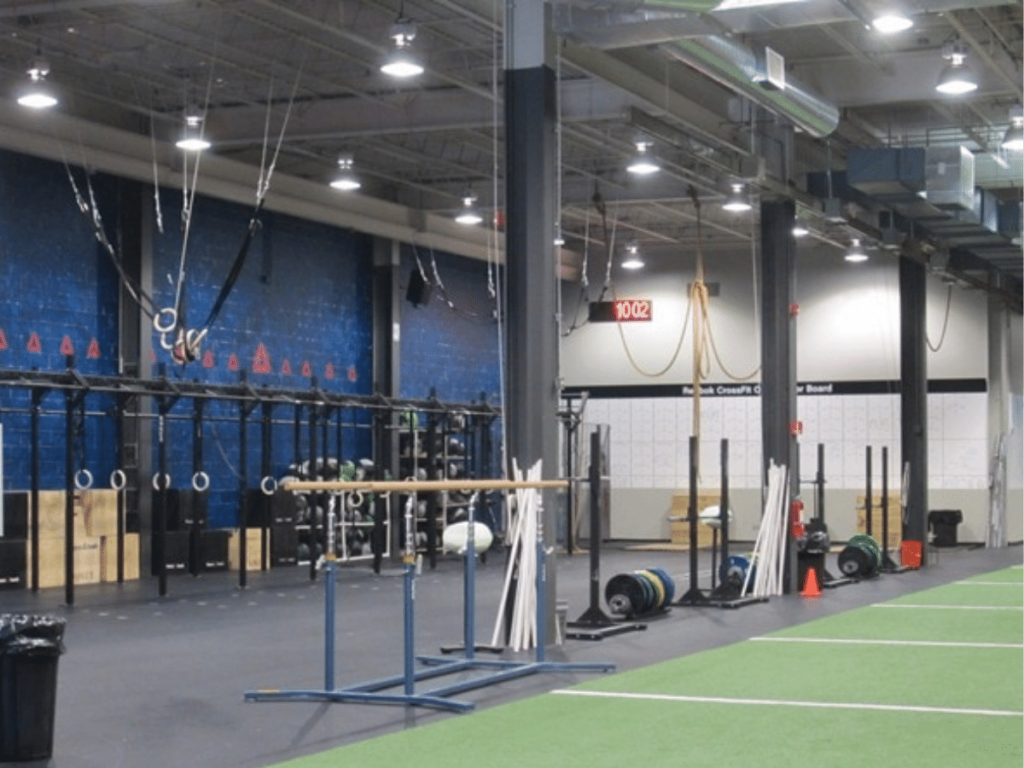
Natural Light
Embracing natural light in the gym design is a powerful way to create a lively and inviting environment. Here’s something we can both agree on, incorporating natural light into your gym design has multiple advantages. It not only provides a visual connection to the outdoors, but it also helps reduce the gym’s reliance on artificial light, offering environmental and cost benefits.
Artificial Light
When natural light isn’t sufficient, artificial lighting comes into play. The key here is to use a combination of different light sources, such as overhead lights, task lights, and accent lights, to create a balanced and well-lit space. It’s critical that all areas are properly illuminated, from workout zones to locker rooms. According to Wix, lighting plays a crucial role in influencing the body’s circadian rhythms, thereby impacting energy levels.
Adjustable Lighting
Introducing adjustable lighting can add an extra layer of customization to the gym, it allows to alter the atmosphere depending on the time of day or the type of workout being conducted. So, what’s my point? Choosing the appropriate lighting for each workout type sets the stage for optimal performance and enhances the overall exercise experience.
Lighting Control
Implement lighting control systems that allow you to adjust the intensity and color of the lights based on different activities or times of the day. This level of control ensures a versatile and adaptable gym environment that can cater to various workout needs and preferences.
Energy Efficiency
Opt for energy-efficient lighting solutions like LED lights, which not only reduce energy consumption and operational costs but also offer superior brightness and color rendering capabilities. Energy-efficient lighting solutions like LED lights boast an extended lifespan, ensuring long-term durability while enhancing the visual experience for gym users.
4. Acoustics and Sound Control
Acoustics and sound control play a crucial role in creating a conducive environment for workouts, ensuring member comfort, and maintaining a pleasant atmosphere. Here are five key aspects to consider when it comes to acoustics and sound control in your gym:
Sound Absorption
To create a quieter and more focused workout environment, it is essential to incorporate sound-absorbing materials such as acoustic panels or baffles. These materials effectively absorb sound waves, minimizing reverberation and preventing excessive echoes. But wait, there’s more! Reducing noise levels enhances member focus and immersion during workouts.
Flooring and Wall Treatments
When it comes to flooring, opt for materials that effectively minimize impact noise, such as rubber flooring or specialized underlayments. These choices provide a resilient and shock-absorbing surface, reducing noise caused by footfalls and equipment vibrations. And on top of that, to further enhance sound control, consider applying sound-absorbing treatments to walls.
Sound Isolation
To create a more peaceful and focused workout environment, it’s crucial to implement sound isolation strategies that effectively limit the transfer of sound between different areas of the gym. This can be achieved through various means, such as incorporating insulation materials in walls and ceilings or creating separate workout zones with soundproof partitions.
Sound Masking
Utilize sound masking systems that emit low-level background noise, effectively reducing the audibility of distracting sounds and conversations. By introducing a consistent background sound, you can enhance member concentration and create a more peaceful workout environment.
Equipment Placement and Layout
To minimize noise interference, thoughtfully arrange equipment in your gym space. For instance, strategically place cardio machines or weightlifting stations away from quiet areas to prevent noise disruptions. Additionally, utilizing equipment mats can effectively reduce vibrations and impact noise caused by weights or exercise machines.
5. Branding and Aesthetics
The branding and aesthetics of the Functional Training Gym extend beyond superficial allure; they’re instrumental in forging an indelible identity and fostering a sense of community among the members. It’s not just about visuals; it’s a captivating narrative that tells the gym’s unique story, fostering a sense of belonging and pride in the members.
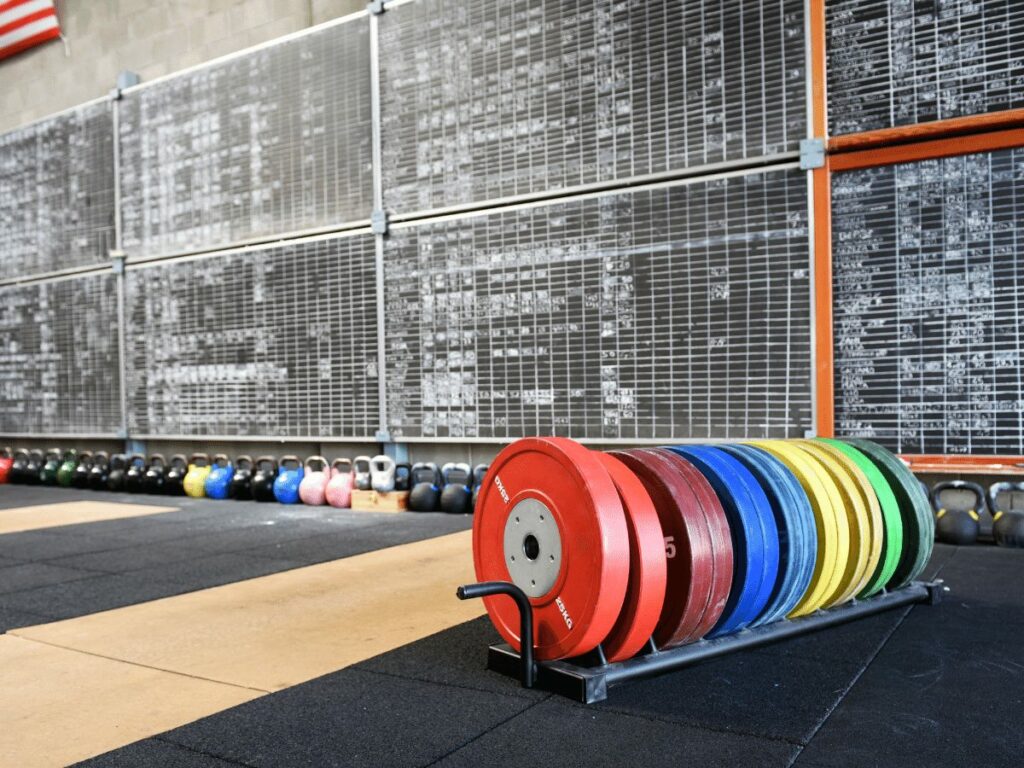
Color Schemes
Selecting the right color scheme is critical in setting the mood and tone of the gym. Colors can influence emotions and even physical responses, impacting workout intensity. For example, vibrant colors like red and orange can stimulate energy and motivation, making them ideal for high-intensity workout zones.
Music and Sound
The auditory experience is another element that contributes to branding and aesthetics. The right music can motivate members, improve their mood, and make their workout sessions more enjoyable. Acoustic treatments can lower equipment noise, adding comfort and appeal to the gym while supporting its visual branding.
Brand-Consistent Decor
Infusing the decor with brand identity elevates the gym’s aesthetic appeal and fosters brand loyalty. Custom signage, motivational quotes, and meaningful artwork create an immersive environment, captivating members and deepening their emotional connection. Incorporating these elements elevate the overall gym experience and cultivate a sense of community and belonging. Amazing, isn’t it?
Functional Aesthetics
While aesthetics are crucial, they must complement functionality without compromise. The design elements employed should enhance the workout environment rather than hinder it. Striking the right balance ensures that the gym not only looks impressive but also functions optimally, creating a seamless and enjoyable experience for the members. Sounds good, right?
Social Media Presence
A visually appealing gym with strong branding is more likely to be shared by members on social media, providing free marketing and increasing brand awareness. Data presented in Statista 18% of marketers used social media, specifically TikTok, to promote their products and services.
6. Architectural Elements
The architectural elements of the Functional Training Gym serve as the bedrock upon which the entire design is built, harmonizing aesthetics and functionality into a seamless whole. These elements go beyond visuals, forming the framework that supports and enhances the gym experience. They ensure every aspect aligns with the vision of creating an inspiring and high-performing fitness environment. Below are the following:
Space Allocation
Effective space allocation is key to ensuring the gym’s functionality and user comfort. It involves planning for a balanced distribution of workout areas, auxiliary spaces (like changing rooms or lounges), and circulation paths. Here’s what we found instead: By thoughtfully allocating space, you create an environment that promotes seamless movement, optimizes user experience, and facilitates efficient workouts.
The table below presents the key benefits of effective space allocation in a gym. Explore how thoughtful planning and distribution of workout areas, auxiliary spaces, and circulation paths enhance functionality, user comfort, seamless movement, safety, and accessibility. Discover the importance of space allocation in creating an environment that promotes efficient workouts and optimizes the overall gym experience.
| Space Allocation Benefits | Description |
| Optimal Functionality | Effective space allocation in a gym ensures optimal functionality by strategically organizing different workout areas, auxiliary spaces, and circulation paths. This layout allows for efficient use of space, making it easier for members to navigate the gym, access equipment, and engage in their desired workouts without feeling cramped or restricted. |
| User Comfort and Experience | Thoughtful space allocation contributes to user comfort and a positive workout experience. Sufficient space between equipment and workout zones reduces crowding and minimizes the risk of accidents or disruptions during exercises. By providing ample room for movement, members can exercise comfortably, focus on their workouts, and enjoy a pleasant gym experience. |
| Seamless Movement and Flow | Well-planned space allocation promotes seamless movement within the gym. Clear circulation paths and appropriate spacing between equipment and workout areas enable members to transition smoothly from one exercise or zone to another. This efficient flow eliminates congestion, enhances convenience, and maximizes the use of gym space. |
| Enhanced Safety and Accessibility | Proper space allocation prioritizes safety and accessibility. Sufficient clearance around equipment and designated pathways reduce the risk of collisions or accidents. It also ensures that individuals with mobility aids, such as wheelchairs or crutches, can navigate the gym comfortably, fostering an inclusive and accessible environment for all members. |
| Versatile Use of Auxiliary Spaces | Effective space allocation extends beyond workout areas to auxiliary spaces like changing rooms, lounges, or reception areas. By allocating adequate space for these areas, gym owners can provide comfortable and well-equipped facilities that enhance the overall member experience. This versatility allows members to relax, socialize, or complete pre- and post-workout routines conveniently. |
| Future Scalability and Flexibility | Strategic space allocation takes into account future scalability and flexibility. Gym owners can plan for potential expansion or equipment additions by reserving space or designing modular layouts that can adapt to changing needs. This forward-thinking approach ensures that the gym can accommodate growth, new fitness trends, and evolving member demands in the long run. |
Building Materials
Gym materials are essential for durability, maintenance, and aesthetics. From flooring to walls and ceilings, each element enhances quality and functionality. And then it hit me – by selecting the right materials, you not only ensure the longevity of your gym but also create an environment that exudes quality and enhances the overall workout experience for your members.
Design Details
Paying attention to small design details can enhance the overall user experience. This could be anything from adding mirrors in strategic locations to enhance the perception of space, to installing easily accessible storage solutions for gym equipment. At Yanre Fitness we understands the importance of durability, maintenance, and aesthetics.
Integration with the Outdoors
Integrating outdoor elements into the gym architecture can add a unique appeal and enhance the workout experience. This could involve having an outdoor workout area, large windows with views, or using natural elements like plants in the interior design. Such integration not only provides a refreshing change of scenery but can also offer unique workout options like outdoor yoga or boot camps.
Energy Efficiency
Incorporating energy-efficient design elements can help reduce the gym’s carbon footprint and operating costs when opening a gym. This can include using energy-efficient lighting and HVAC systems, solar panels, and insulation materials to control temperature. Yanre Fitness develops a characteristic that focuses on energy efficiency that can make the gym more sustainable.
Conclusion
Designing a functional training gym with an emphasis on maximizing performance and profitability is an exciting and rewarding endeavor. So, take your time and plan your gym design wisely, always keeping the needs of your members in mind.
If you are planning to bring your gym business to the next level and you need assistance with it, feel free to drop us a message and our expert team is always ready to address your inquiries.
Related articles:






